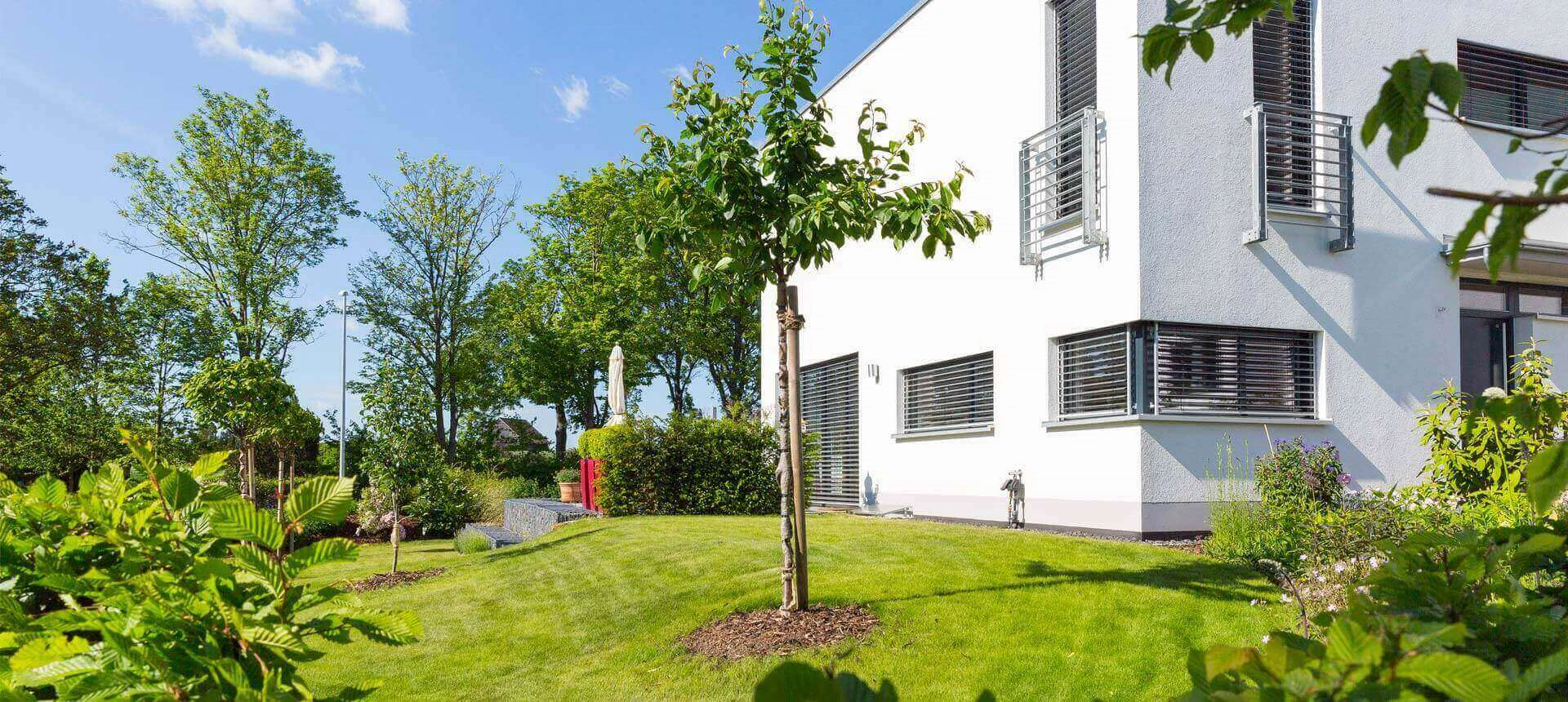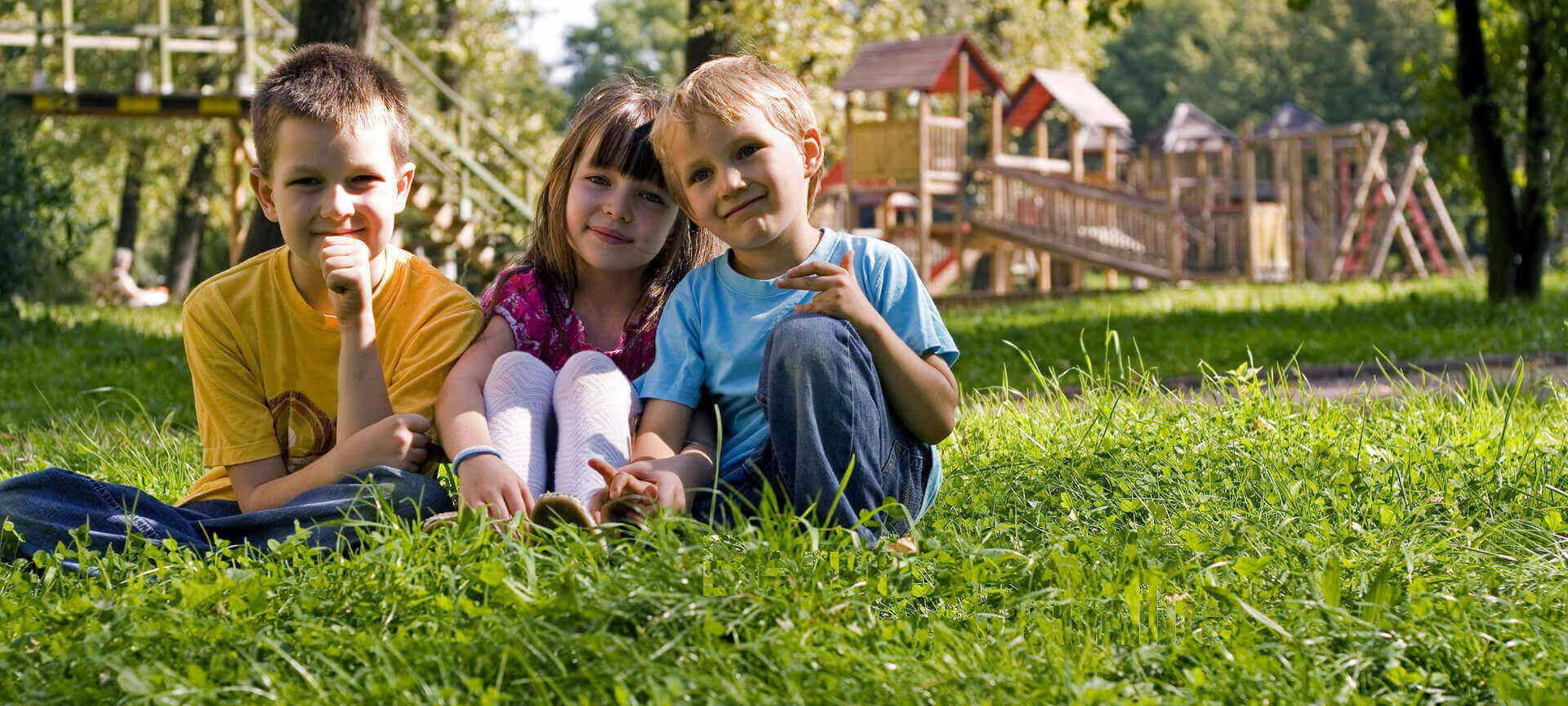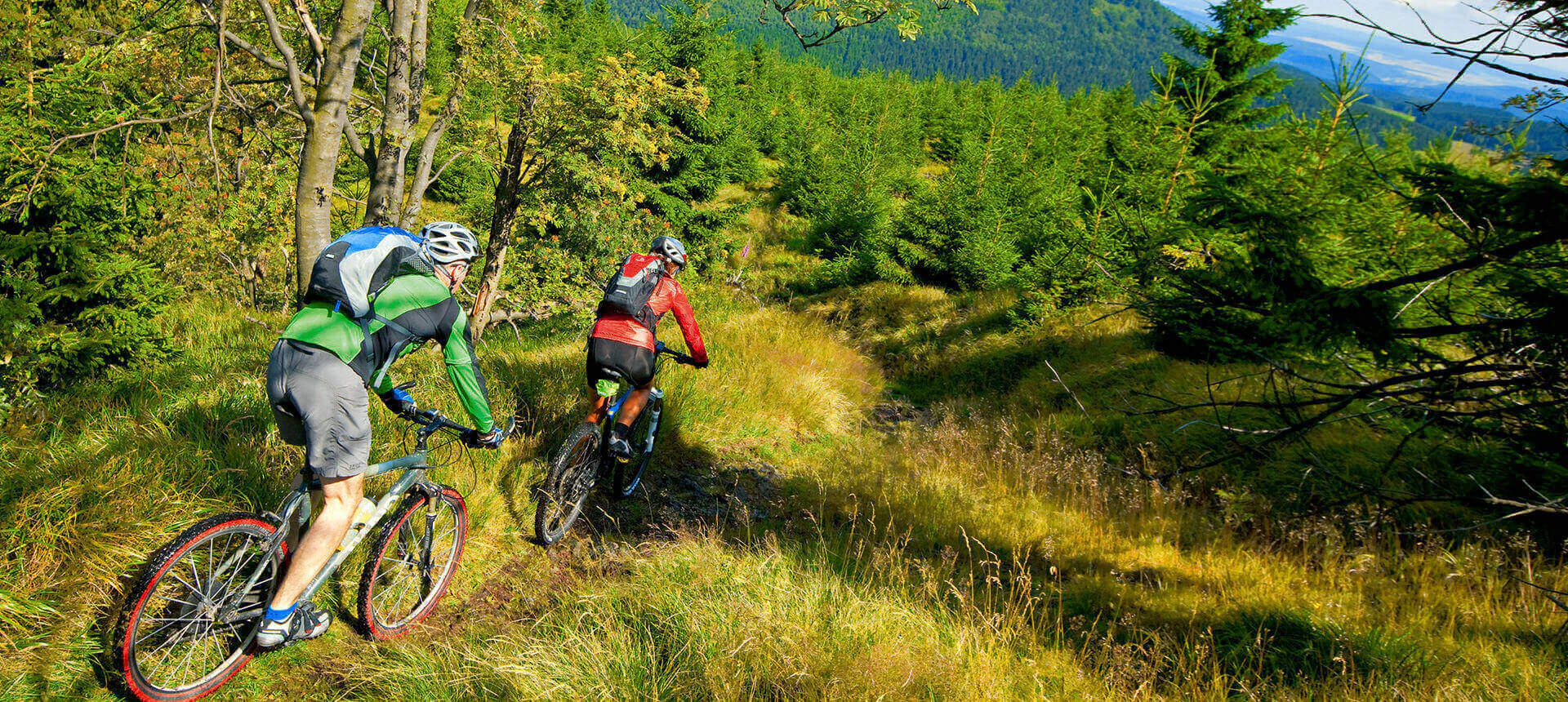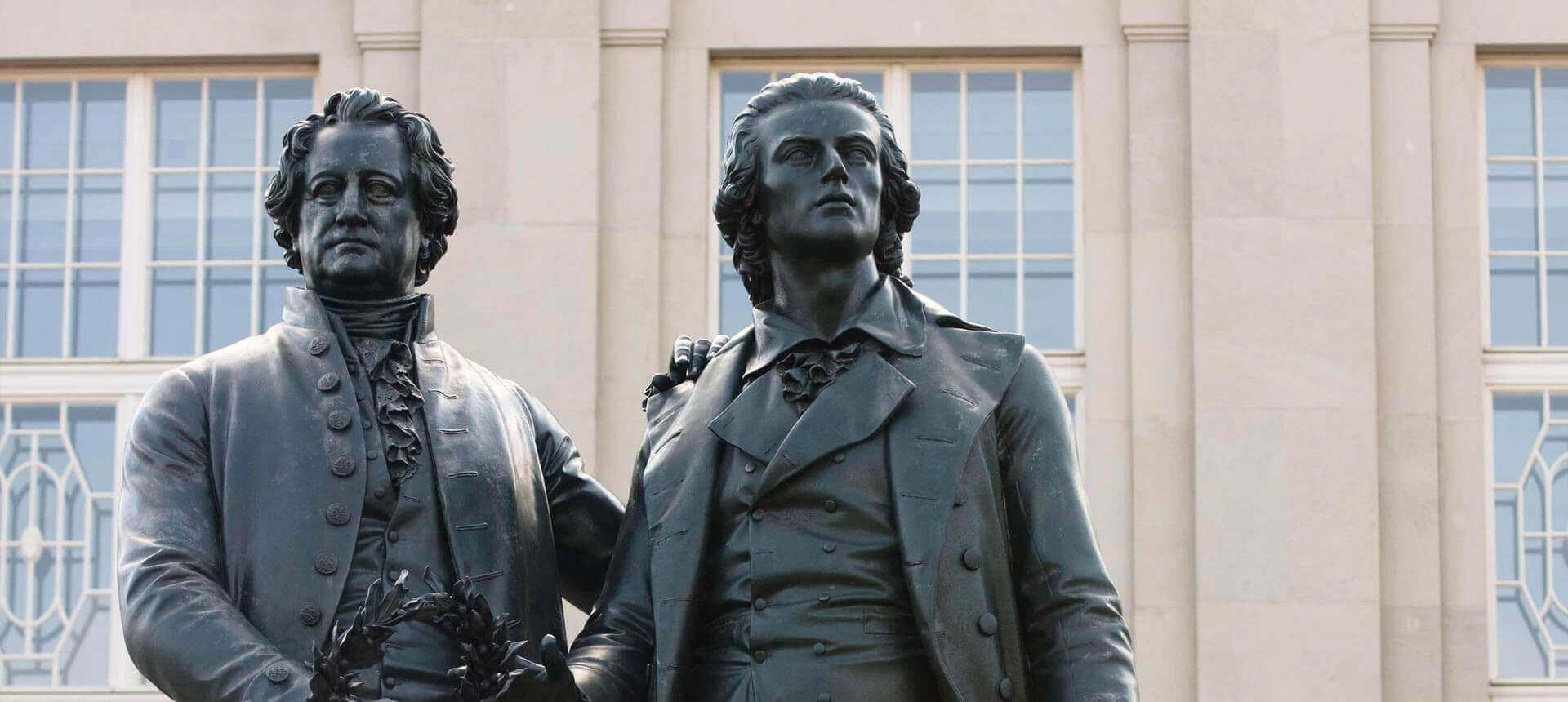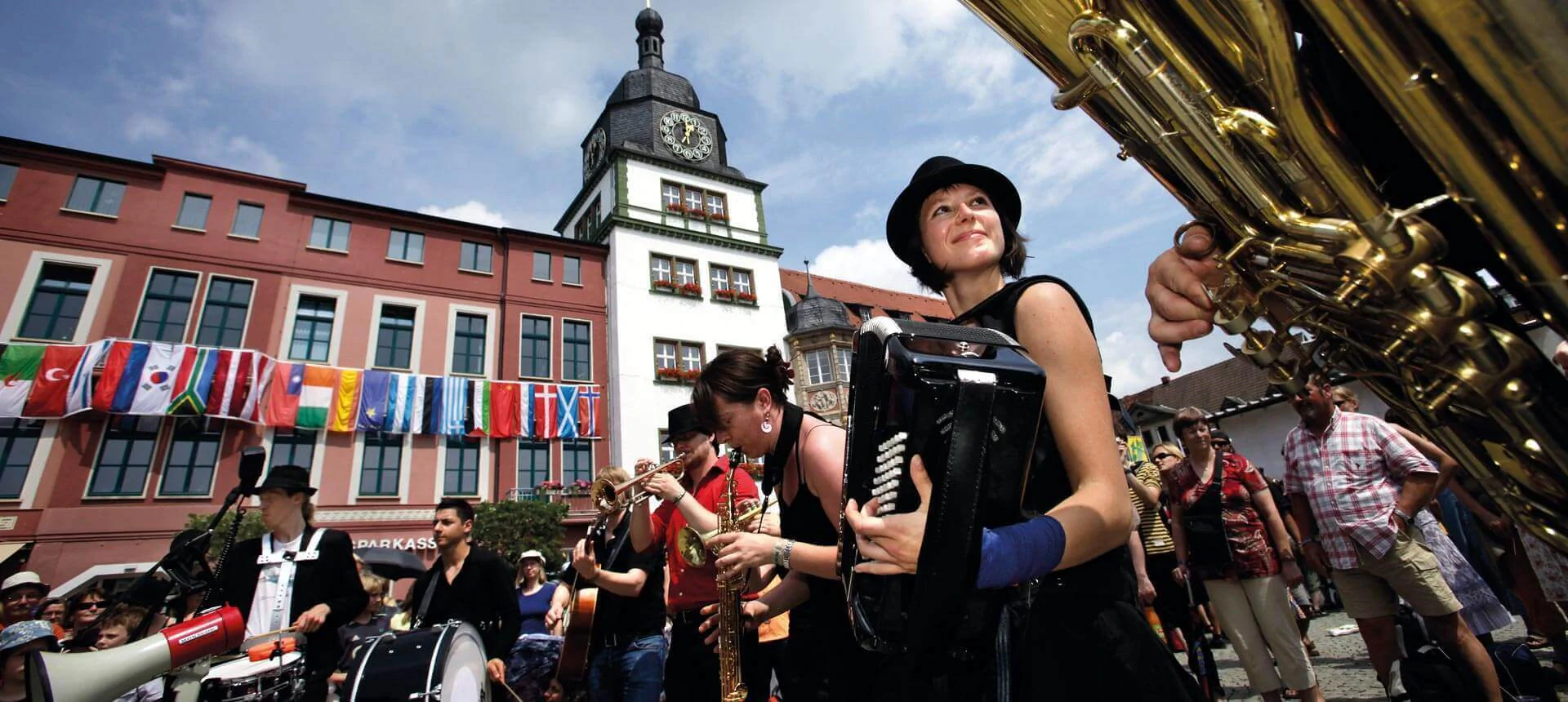At home in Thuringia
The range of housing options here includes a home of your own in the countryside or a restored villa near the city center. The residential market is not over-heated and it is not too difficult to find the right home in many parts of the state. House prices and rents are among the cheapest in Germany, although housing is more expensive and difficult to find in the bigger, more sought-after cities like Erfurt, Weimar and Jena. Rural areas represent particularly good value and in many cases, it is only 15 minutes’ drive to the autobahn if you are heading for a major center in Thuringia and beyond.
Renting
Thuringia has become famous as a place of affordable rental housing. The cheapest rentals (EUR 3.66 /m²) are in Kyffhäuserkreis, a district in the north. Elsewhere, you can expect to pay from EUR 4/m² to 7/m² for a 70 m² apartment, depending on the location, with prices in Jena reaching an average of almost EUR 8/m². Many cities and municipalities provide tenants and landlords with a representative rent index for their area.
Freehold Apartments
Brand-new good-quality freehold apartments start at EUR 2,300/m² in Erfurt and EUR 2,800/m² in Jena. Top-quality apartments in Erfurt and Jena sell for as much as EUR 3,300 to 4,500/m², while you can have your own home in Gotha or Suhl for around EUR 2,000/m². A cheaper option is to buy an existing home.
Real estate for rent or for sale can be found on web portals such as:
Building a Home
Prices for bare land vary according to region and specific location. Prices in cities like Apolda and Schmalkalden begin around EUR 15/m², but you can expect to pay at least EUR 140/m² in Erfurt, Jena and Weimar, where prices in the more exclusive suburbs can top EUR 450/m². Land in rural areas can be purchased for less than EUR 5/m². The Thuringian ‘Landesamt für Vermessung und Geoinformation’ authority provides an online land value information system called BORIS-TH so you can look up land values for sections throughout the state.
You can find offers for residential building land here:
Combining work and family
Thuringia is family friendly. Here you can enjoy your career without compromising on family life. Many companies offer flexible working hours, places in nearby child care centers or financial subsidies. There are many types of daycare center, and 98 percent of children between the ages of three and six are enrolled in some form of early childhood education.
Childcare
Every child in Thuringia over the age of two is guaranteed full-time care and education in an early childhood center or after-school care from the age of two until they finish elementary school. Children in Thuringia can attend kindergarten from the age of two. Under twos are cared for by at-home caregivers/educators and day nurseries. Our 1,300 daycare centers look after more than 98,000 children and at-home caregivers are responsible for around 1,000 children.
The next generation is well looked after at elementary school too. Every child is entitled to after-school care from the day they start school until they finish elementary school. After-school care supports and complements the home and school environments. Many elementary schools also offer a wide range of extra-curricular activities and Sports.
Combining Career and Family
Thuringian businesses care about families and offer their staff benefits including:
- Family-friendly flexible working hours
- Part-time and work-from-home Options
- Financial subsidies
- Guaranteed places at nearby daycare Centers
- In-house Kindergartens
The Thuringian Agency For Skilled Personnel Marketing (ThAFF) provides information and support to employees and companies on all issues relating to the compatibility of work and family, especially on the topic of childcare and care for dependents.
Forests and Waterways
Thuringia is famous for its vast swathes of green. Thirty-two percent of the state is forested, making it one of the leafiest states in Germany. Three mountain ranges – Harz, Rhön and the Thuringian Forest – shape the geography, and fall is a riot of color, especially in the 7,600-hectare Hainich National Park, the largest continuous deciduous forest in Europe. As well as an impressive walkway through the tree tops, there are rare wildcats and hidden idyllic waterways.
The beauty of the river landscapes in Thuringia is irresistible. The Saale, Unstrut, Werra, Schwarza and Ilm rivers each has their own unique beauty. If you like swimming, you’ll find water nearby wherever you are. Thirty-three natural bathing areas provide for sport, recreation and rest. There are also water parks and thermal spa areas such as Bad Salzungen and Zeulenroda with a variety of bathing options and vacation activities.
- Hainich National Park
- Harz National Park
- Thuringian Forest
- Rhön Biosphere Reserve
- Swimming fun in Thuringia
Leisure
If you enjoy outdoor recreation, on land or water or in the air, you’ll fit right in here. You can go hiking, riding, swimming, rafting, surfing, paragliding or climbing, play golf, take a ride in a rubber dinghy, and much more. The ‘greens’ of the attractive golf courses are set against a beautiful green natural backdrop.
Thuringia is one of Germany’s most popular regions for hiking. The almost 170-kilometer-long Rennsteig is the oldest network of hill trails in the Thuringian Forest.
Winter Sports
In winter, skiers make the most of hundreds of kilometers of cross-country ski trails and state-of-the-art ski lifts up the slopes for alpine skiing and snowboarding. The training tracks used by professional cross-country skiers are open to the public and supplement Thuringia’s already impressive network of skiing trails. A recent highlight was the construction in Oberhof in September 2009 of an indoor ski run for Nordic winter sports that offers ideal training conditions for top sportspeople and an opportunity for amateurs to have a go too.
Wellness for Body and Soul
Salt water, moor, sulphur, mineral springs and thermal water: Thuringia abounds in the healing properties of nature that have stood the test of time. The Thuringian Forest and the many health resorts offer the perfect place to relax, with everything from traditional wellness and spa treatments to the latest relaxation techniques to ensure your stay is restful and restorative.
Doctors and Hospitals
Thuringia has 45 hospitals and 34 preventive care and rehabilitation facilities that provide general and emergency medical care. Patients are very satisfied with the care they receive at the hospitals and medical facilities: a survey conducted by a major daily newspaper showed that a majority of hospital patients felt well cared for and would happily go to the same hospital again if they needed treatment.
There are around 8,870 doctors working in Thuringia’s hospitals and medical practices. This is 10 percent more than in 2003, and the number continues to grow, due mainly to the arrival of qualified doctors from other countries. Government subsidies have been put in place to ensure that the rising demand for family doctors and specialists will be met, particularly outside the main population Centers.
Classicism meets inspiring modern style
A fascinating and formative history, a stunning array of valuable art and cultural treasures, world-famous personalities – Thuringia offers so much for young and old alike. It’s known as the Land of Poets and Thinkers, and no wonder, with cultural icons such as the architecture of Weimar, Wartburg Castle and the Krämer Bridge in Erfurt that have spread its fame far and wide.
Historic Cities
In Erfurt, a stroll over Krämer Bridge takes you back in time to the Middle Ages: narrow alleys, romantic squares and interesting buildings make Europe’s oldest bridge with houses built on it the jewel in the crown of Thuringia’s state capital.
Think of Weimar and the names Johann Wolfgang Goethe and Friedrich Schiller spring to mind immediately. Germany’s best-known poets wrote most of their work in the decades they spent in Thuringia. In 1919, Walter Gropius began the world-renowned Bauhaus movement in Weimar, which was also the place where giants like Paul Klee, Wassily Kandinsky and the painter and graphic designer Lyonel Feininger did some of their best work.
Franz Liszt, Richard Wagner and Johann Sebastian Bach, who was born in Eisenach in 1865, are just some of the musicians who called Thuringia home. In a play on Bach’s name, which means ‘stream’ in German, Beethoven is said to have remarked: “He should not be called ‘stream’, but rather ‘ocean’.”
Cultural Life
Thuringia has more than 200 theaters, opera houses, museums and orchestras. Even in Germany, this is exceptional. They include the National Theater in Weimar, Meininger Theater and the Thüringen Philharmonie Gotha. The smaller venues, like the Liebhabertheater Großkochberg on the European Route of Historic Theaters, are well worth a look too, with their authentic charm and the flair of a grand history. The cultural highlights each summer include the Domstufenfestspiele on the steps of the cathedral in Erfurt, the Jenaer Kulturarena and the Kunstfest in Weimar.
Cultural events for young people are in great demand. Concerts with alternative singers and songwriters, exhibitions by up-and-coming artists and festivals on a more intimate scale make the cultural scene for young people in Thuringia a very lively one. A selection of cafés, clubs, exhibitions and projects:
Experience history
Thuringia is known as a land of castles. Romanesque village churches and huge cathedrals, bizarre knights’ castles and baronial palace complexes, classicist theaters and buildings are everywhere.
Wartburg and other Castles
Like pearls on a string, castles line the banks of the Saale River, which has separated Franconia, Thuringia and Saxony from the Slavic Sorbs through the centuries. The well-preserved buildings and grounds are a testament to the skill of those who constructed them.
Knights’ castles like the ‘Drei Gleichen’, Creuzburg, Runneburg and, of course, the Wartburg, which has been singled out for UNESCO world cultural heritage status, allow us a glimpse into how our ancestors lived. Luther’s translation of the New Testament while at the Wartburg makes this castle one of great historic significance for Thuringia and also the world. Louis (Ludwig) the Springer began it all in 1067 when he built the fortress on a 400-meter-high cliff in Eisenach.
Castles
Thuringia is known as a land of castles. In the royal cities of Gotha, Altenburg and Rudolstadt, but in many other cities too, beautifully restored castles now house interesting exhibitions. A visit to Schloss Friedenstein in Gotha opens our eyes to the Baroque era. On the other side of the Saale Valley, there is a unique grouping of three castles (Old castle, Rococo castle and Renaissance castle) linked by scenic castle gardens – the Dornburg Castles.
Thuringia’s famous Foods and Restaurants
Thuringian Rostbratwurst and dumplings have made a name for themselves all over the world, but there are many other culinary delights for you to sample. Care to try? The recipes are all there – from ‘beer soup’ and ‘onion soup’ to delicious pork ‘Mutzbraten’, ‘Hasenrücken’ or saddle of hare, Schwarzbierbrätl marinated in black lager and mustard, ‘Schaalaer Apfelsuppe’ (hot or cold apple ‘soup’ with wine) and Schnapskuchen, a sweet treat.
- Sterne-Restaurant Clara in Erfurt
- Sterne-Restaurant BjörnsOx in Dermbach
- Sterne-Restaurant Masters in Blankenhain
- Japanische Spitzenküche NASHI Dining in Erfurt
- Weinrestaurant Turmschänke in Eisenach
- Restaurant Magda im historische Magdalenengut Erfurt (OT Alach)
- Restaurant AnnA im Hotel Elephant Weimar
Branded products from Thuringia
- Köstritzer Schwarzbier
- Vereinsbrauerei Apolda
- Heichelheimer Klöße
- Mühlhäuser Pflaumenmus
- Nordhäuser Doppelkorn
- Viba Nougat
- Greußener Salami
- Born Senf
- Vita Cola
- Saale-Unstrut-Weine
- HAINICH Konserven
- Fahner Frucht
- Goldhelm Schokolade
Festivals and celebrations
In Thuringia, people like to celebrate all year round. Particularly popular are:
